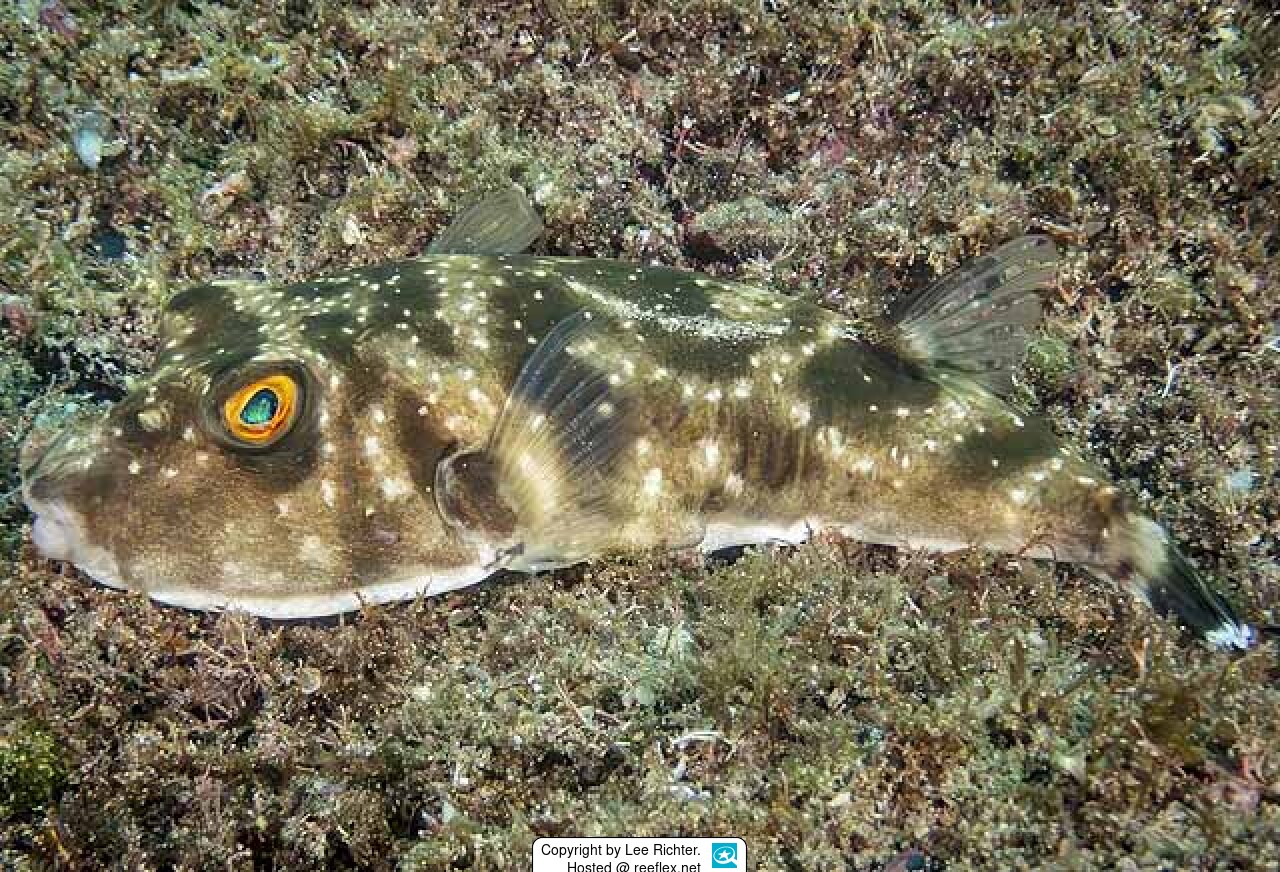Info
The back is light brown to gray, paler below, with an orange iris.
There are three indistinct dark stripes across the back – behind the pectoral fins, under the dorsal fins, at the base of the tail.
There are small white spots and stripes on the upper body and a dark stripe between the eyes.
The dorsal, anal and pectoral fins are pale, the tail has a darker outer half and a white margin.
Adult animals are found in bays and over sandy substrates, while small juveniles are often found in more open areas over gravel or rocky substrates .
Puffer fish can produce toxins such as tetrodotoxin and saxitoxin and accumulate them in the skin, gonads and liver.
The toxin tetrodotoxin, which is contained in the fugu, is 1000 times more toxic than cyanide and there is no antidote serum, death then occurs by respiratory paralysis
The degree of toxicity varies depending on the species, but also on the geographical area and season.
We recommend that you never prepare puffer fish yourself, as the risk of fatal poisoning is far too great.
If you still absolutely want to eat puffer fish meat (fugu), then the fish should only be slaughtered by a Japanese special chef with a license and several years of training.
Only the training of these special chefs can guarantee the correct slaughter, complete removal and proper disposal of all toxic parts of the fish.
We would like to express our special thanks to Lee Richter for the first photo of Sphoeroides lispus.
There are three indistinct dark stripes across the back – behind the pectoral fins, under the dorsal fins, at the base of the tail.
There are small white spots and stripes on the upper body and a dark stripe between the eyes.
The dorsal, anal and pectoral fins are pale, the tail has a darker outer half and a white margin.
Adult animals are found in bays and over sandy substrates, while small juveniles are often found in more open areas over gravel or rocky substrates .
Puffer fish can produce toxins such as tetrodotoxin and saxitoxin and accumulate them in the skin, gonads and liver.
The toxin tetrodotoxin, which is contained in the fugu, is 1000 times more toxic than cyanide and there is no antidote serum, death then occurs by respiratory paralysis
The degree of toxicity varies depending on the species, but also on the geographical area and season.
We recommend that you never prepare puffer fish yourself, as the risk of fatal poisoning is far too great.
If you still absolutely want to eat puffer fish meat (fugu), then the fish should only be slaughtered by a Japanese special chef with a license and several years of training.
Only the training of these special chefs can guarantee the correct slaughter, complete removal and proper disposal of all toxic parts of the fish.
We would like to express our special thanks to Lee Richter for the first photo of Sphoeroides lispus.







 Dr. Lee Richter, USA
Dr. Lee Richter, USA















